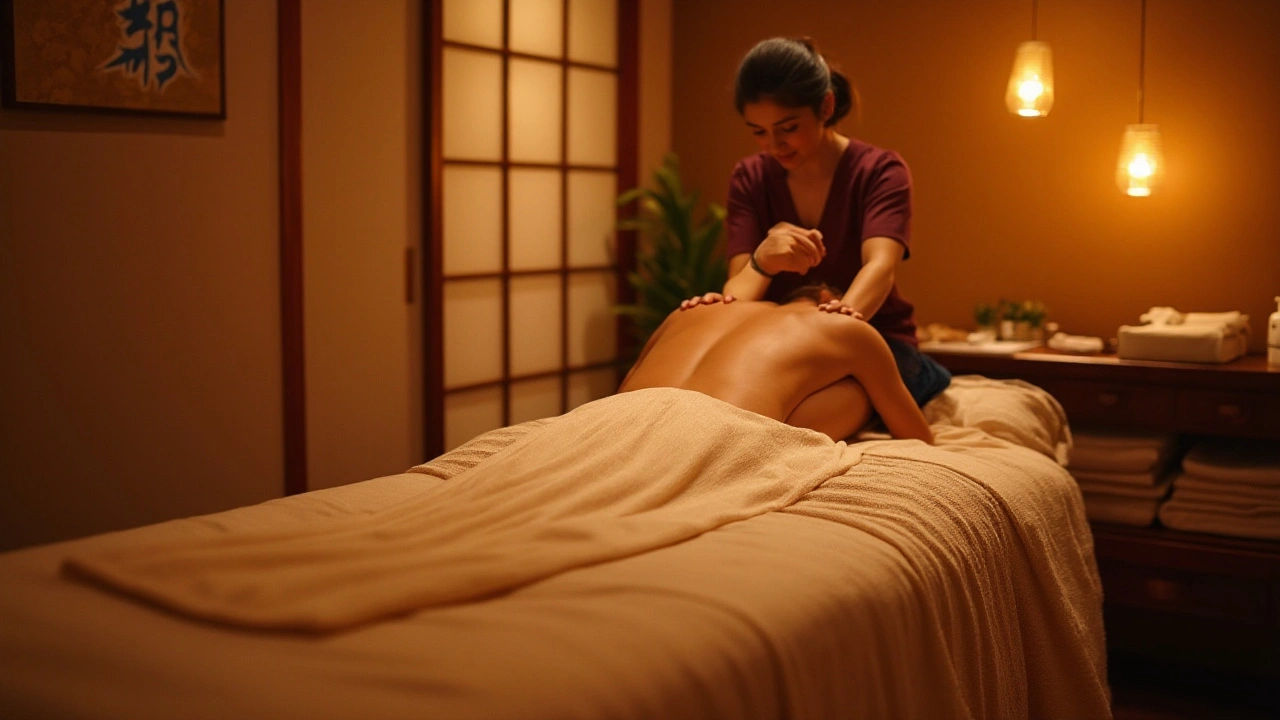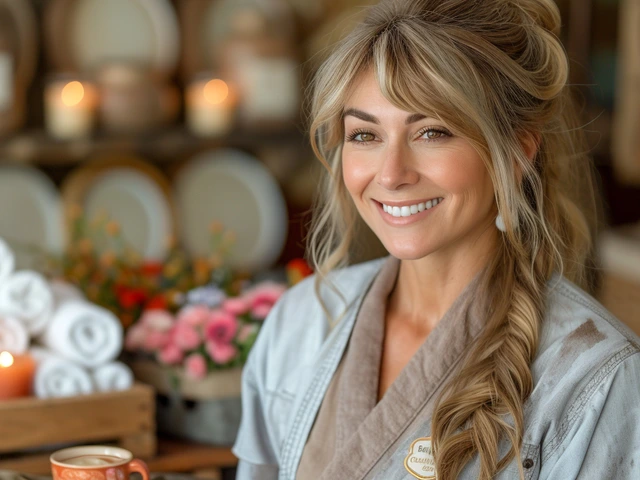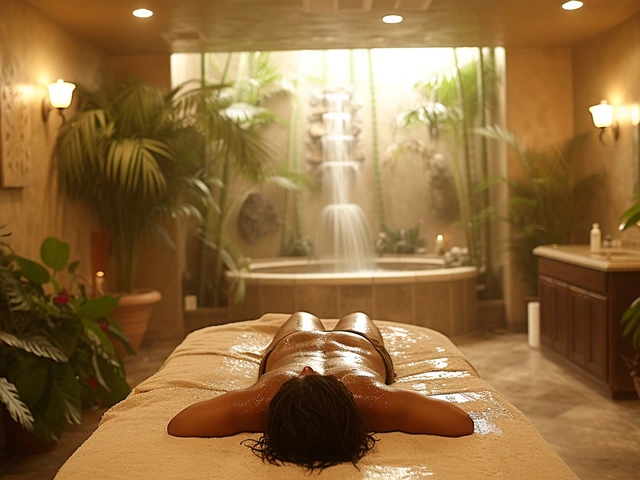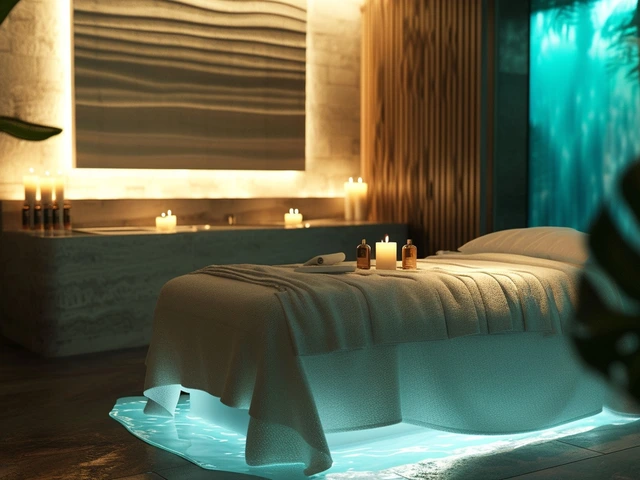Nuru massage, a unique and intimate therapeutic practice, finds its roots in Japan. Known for its characteristic body-to-body technique, it employs a special, slippery gel that facilitates fluid and harmonious movements. Over time, this sensual massage form has diversified, branching into various intriguing styles that enhance both relaxation and rejuvenation.
Whether you're a novice or a seasoned massage enthusiast, understanding the various Nuru massage techniques can be both enlightening and advantageous. The variations not only provide unique experiences but also cater to different preferences and needs, making the practice adaptable and inclusive.
- Origins of Nuru Massage
- Traditional Nuru Technique
- Modern Adaptations
- Benefits of Different Styles
- Choosing the Right Variation
Origins of Nuru Massage
The mesmerizing journey of Nuru massage begins in Japan, a land where ancient traditions often entwine with the art of healing. This sensual therapy found its genesis in the coastal city of Kawasaki, where innovation met cultural aesthetics, creating an unmatched bodily experience. Countless practitioners in Japan viewed it as a harmonious blend of existing massage techniques interwoven with intimate skin-on-skin contact. The word 'Nuru' itself translates to 'slippery' in Japanese, aptly describing the luscious, slick sensation central to the massage.
Utilizing a special gel made from nori seaweed, this massage ensures smooth gliding, enhancing the body-to-body touch that Nuru is celebrated for. This seaweed-based gel is not only slippery but also loaded with minerals and moisture-rich properties, which, as early practitioners claimed, provide both therapeutic and cosmetic benefits. The application of such a unique substance sets the Nuru massage apart from other existing modalities, adding a distinctive flair that appeals to those seeking something extraordinary in their sensory journey.
The Cultural Integration
Historically speaking, Nuru massage became increasingly popular outside of Japan in the late 20th century as global interest surged towards Eastern therapies and alternative health practices. A surge in open-mindedness towards exploring new forms of relaxation and emotional connectivity opened many doors for this Japanese tradition. As nations embraced elements of Japanese culture, the Nuru massage was soon practiced globally, from luxurious spas to intimate home settings.
What's fascinating is how societies have gently customized the massage, sometimes integrating elements of regional practices and varying personal tastes. In an article in The Journal of Asian Studies, it's noted that '
The fusion of Eastern massage techniques with Western relaxation philosophies has birthed a delightful synthesis, appealing to a global audience seeking novel relaxation methods.'This global acceptance has fueled innovation within the practice, leading to the various variations and adaptations observed today, ensuring that it remains a dynamic and exciting form of touch therapy.
Despite its global reach, the soul of Nuru massage remains deeply rooted in its origins, reflecting the Japanese philosophy of harmony, balance, and intimacy. The practice, even as it evolves, retains its original spirit, offering practitioners and recipients a shared connection that transcends mere physical contact. In truth, its enduring popularity might well lie in this simple fact—that it's not merely a massage, but a cultural exchange weaving together bodies, trust, and the timeless quest for tranquility.
Traditional Nuru Technique
The Nuru massage is a fascinating and unique relaxation ritual that originated in Japan. What sets this technique apart is its use of a special gel made from Nori seaweed, which is both incredibly slippery and nourishing for the skin. This gel is instrumental in creating a seamless, fluid motion that defines the Nuru experience. In the spirit of feeling renewed and invigorated, the traditional Nuru massage is carried out on a large, inflatable mattress, usually placed on the floor to maximize body movement and interaction. The mattress, along with the gel, allows the practitioner to glide with ease and grace over the participant's body, encouraging both relaxation and a profound sense of connection.
The Nuru massage begins with a preparatory phase where the practitioner applies the gel liberally over both their own body and that of the participant. This slippery gel is the secret that enables the body-to-body massage technique, offering a sensation that's both soothing and exciting. The warmth of the gel, combined with the intimate body contact, results in a deeply immersive experience, promoting relaxation and serenity. Nuru massage should be conducted with respect, ensuring a comfortable space where the recipient can fully disengage from the stresses of daily life. This traditional approach is not just about the physical sensations; it's about nurturing a sense of trust and mutual relaxation.
The Art of Motion
Every motion in a traditional Nuru massage is deliberate and slow, emphasizing the importance of gentle yet deeply connective movements. The practitioner often uses their entire body, from hands to feet, to perform the massage. This holistic approach leaves no area untouched, making the massage feel comprehensive and thorough. As these movements follow the contours of the body, tension begins to melt away, leaving the person feeling both physically and emotionally lighter. During the massage, every twist and turn is designed to stimulate the skin, awaken the muscles, and invigorate the soul, facilitating an awareness of one's body that is often neglected in our fast-paced lives.According to health and wellness experts, the most significant benefit of a Nuru massage is its ability to foster an emotional and physical balance. "It's a beautiful symphony of movements where each note has been lovingly composed to ease tension," says Hiroshi Yamamoto, a respected massage therapist from Tokyo.
"Nuru massage reminds us of the fundamental importance of touch, of caring for and connecting with one another on a level that goes beyond words," he adds.Such treatments are not only about indulgence but also about honoring the body’s natural state of harmony and well-being.
The traditional Nuru massage is not only a novel technique but also an opportunity to engage in self-care that respects personal boundaries and enhances well-being. Approaching this practice with an open mind can lead to newfound relaxation and serenity. As you envelop yourself in the soothing embrace of Nuru, you're not just receiving a massage but also embarking on a journey of self-discovery and healing. With each gentle stroke, we are reminded of the profound benefits of nurturing our physical bodies and how this intimacy can contribute to a healthier, happier life.
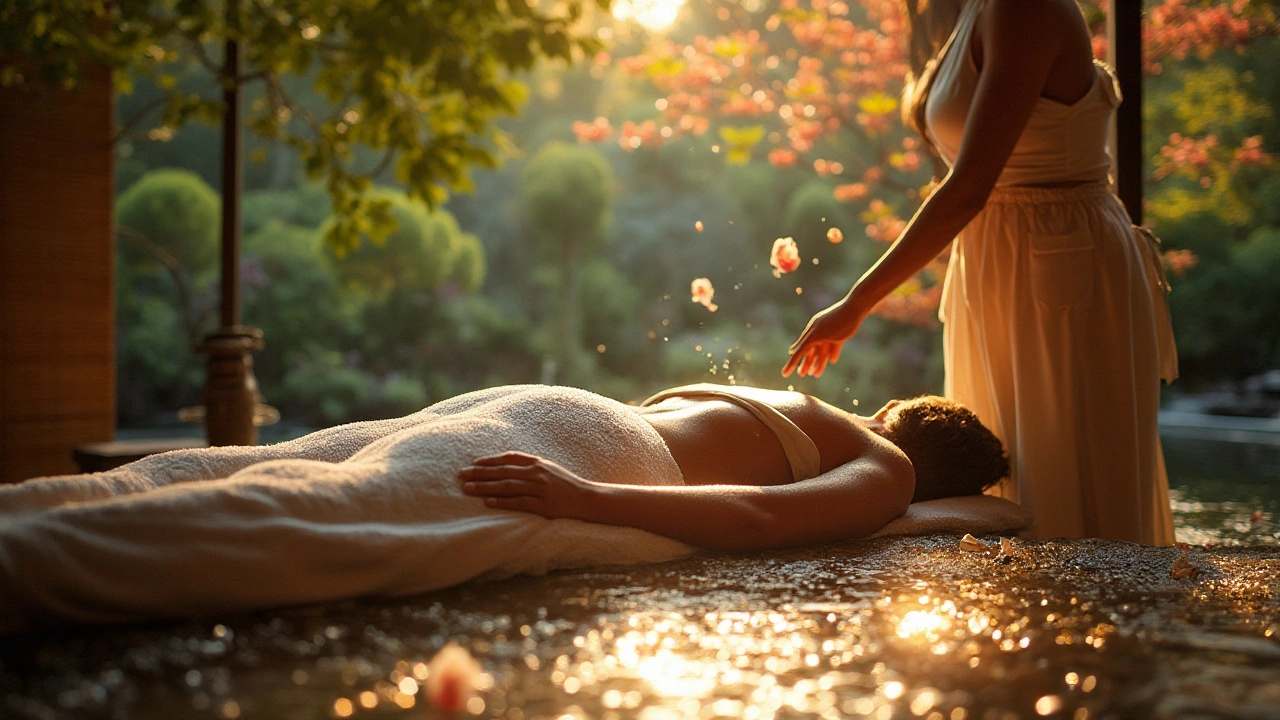
Modern Adaptations
The world of Nuru massage has not been immune to innovation, as therapists and practitioners continuously adapt and evolve the techniques to cater to modern preferences. Traditional methods often revolved around the pure, skin-to-skin experience designed to heighten sensual connection and relaxation. Today, modern adaptations infuse new elements aimed at enhancing the ambiance and experience, all while maintaining the core principles of Nuru. From specialized settings incorporating ambient lighting and soothing music to the introduction of aromatherapy, these changes allow for a deepened sense of immersion and overall tranquility. Practitioners often experiment with the inclusion of heating pads or temperature-controlled rooms to ensure a comfortable environment, adding an extra layer of relaxation.
Modern Nuru sessions sometimes feature the addition of complementary techniques, like Swedish or Shiatsu massage elements, blending the silky glide of Nuru with varied textures of pressure. This fusion approach caters to an audience seeking contemporary styles while reaping the timeless benefits of traditional massage techniques. For some, the use of essential oils is introduced, blending them with the Nuru gel to enhance the olfactory senses and create a holistic experience that stimulates more than just touch. Variations like these reflect the ever-evolving landscape of the wellness industry, where client feedback and new research continually shape the service offerings.
Advancements in technology also play a role in evolving Nuru massage approaches. Digital consultations and the availability of online booking systems have streamlined access to these specialized services, making them more accessible to people from various walks of life. The advent of virtual reality studios offers an interesting, albeit experimental, way to augment relaxation experiences. Although still in its infancy, this innovation showcases the willingness of the massage industry to push boundaries and explore uncharted territory.
According to a recent survey conducted by the International Massage Association, approximately 40% of massage sessions, including Nuru, have added modern elements such as customized playlists or scent therapies to enhance client satisfaction.
"The integration of modern sensory elements into traditional Nuru massage allows clients to indulge in an entirely customized experience," says renowned massage therapist and Nuru specialist, Hiro Nakamura. "It's about creating a journey of relaxation that's as unique as the individual receiving it."These modern adaptations not only expand the clientele actively seeking Nuru massages but also highlight an increasing trend towards holistic and personalized wellness experiences. In a world that is constantly changing and growing, the dynamic nature of Nuru massage continues to hold a place in the ever-popular wellness routines of today. This willingness to embrace change assures that the practice remains relevant and appealing amidst an ever-competitive market.
Benefits of Different Styles
One of the most alluring aspects of Nuru massage lies in its diverse array of styles, each offering unique benefits that cater to different needs and preferences. The traditional Nuru technique emphasizes body-to-body contact, providing a deeply intimate and relaxing experience. This practice is beneficial for enhancing connection and trust between partners, as well as offering a soothing escape from the stresses of daily life. The intimate nature of this massage encourages the release of oxytocin, often dubbed the 'love hormone,' which can foster a sense of wellbeing and warmth.
Modern adaptations of Nuru massage introduce variations that incorporate elements such as aromatherapy, incorporating scents and oils that enhance the sensual atmosphere and promote relaxation. These styles often blend traditional techniques with contemporary methods, allowing for a customized experience. Some variations focus on specific therapeutic outcomes, such as stress relief or muscle tension reduction, making them suitable for individuals seeking particular health benefits. Practitioners often emphasize the emotional and psychological benefits of engaging in the massage, highlighting the release of tension and promotion of mindfulness.
Sensual massage styles derived from Nuru often include guided breathing exercises to deepen relaxation and focus. Breathing techniques can aid in calming the nervous system, fostering a state of tranquility and presence. The rhythmic flow of movements and the gentle touch can also improve circulation, enhancing the delivery of oxygen and nutrients to tissues and promoting overall health. Individuals who engage regularly in these massage techniques report not only improved physical well-being but also heightened emotional stability and clarity.
A study conducted by the International Journal of Therapeutic Massage & Bodywork found that body-to-body massage can have profound impacts on mental health, reducing symptoms of anxiety and depression. Participants in the study noted improvements in sleep quality and mood regulation, attributing these changes to the holistic benefits of engaging all senses during the massage. By catering to the tactile, olfactory, and auditory senses, Nuru massage styles offer a rich sensory experience that can rejuvenate and refresh both body and mind.
For those new to the practice, experimenting with different styles can be an enriching exploration of personal preferences and health benefits. Whether seeking to deepen a romantic connection, alleviate tension, or simply enjoy a unique relaxation method, the various styles of Nuru massage provide something for everyone. It is recommended to communicate openly with a therapist or partner about specific desires and boundaries to ensure an experience that is both enjoyable and beneficial. Embracing the diversity within Nuru massage can lead to discovering new pathways to physical and emotional wellness.
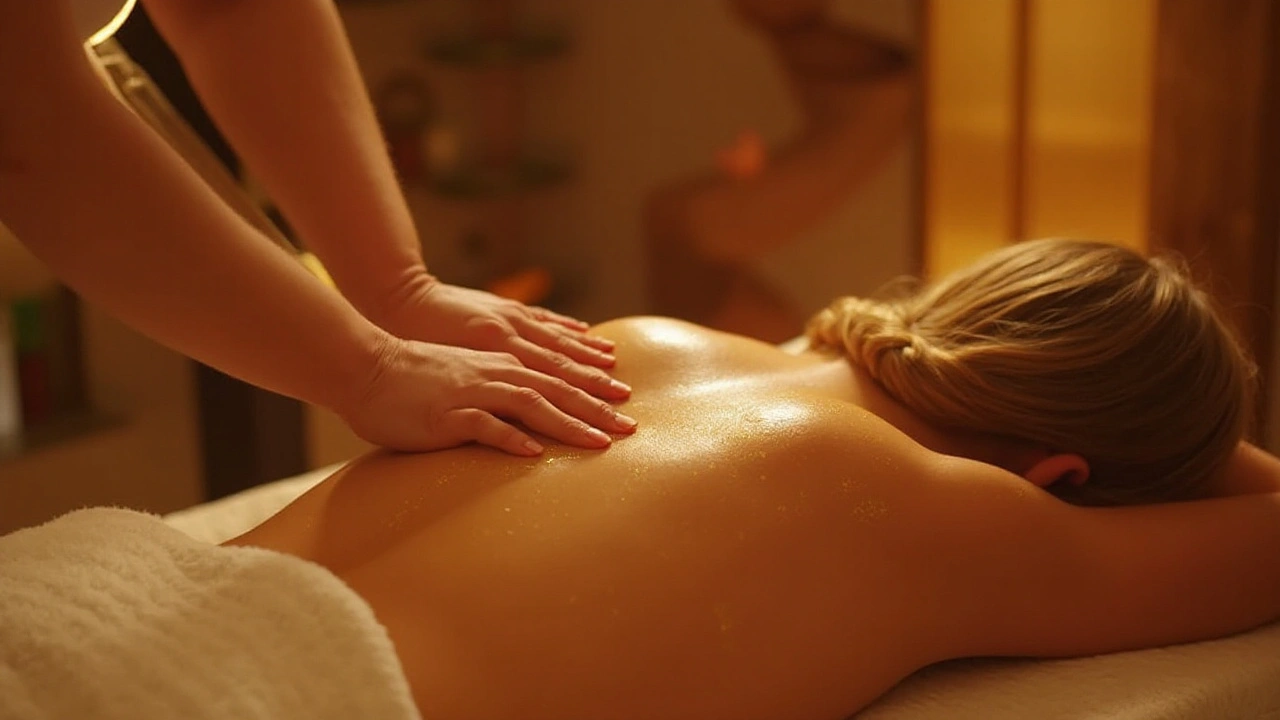
Choosing the Right Variation
Selecting the most suitable Nuru massage technique hinges on personal preferences as well as intended outcomes. With its diverse styles and approaches, deciding which variation will best fulfill your needs can seem overwhelming. Notably, understanding the nuances of each style, whether it is rooted in tradition or modern influences, can guide your decision effectively.
For those desiring a purely authentic experience reflecting Japanese tradition, the classic Nuru technique, featuring ample use of the slippery gel, remains unbeatable. Its focus is on harmonic, body-to-body contact that promotes a genuine sense of connection and deep relaxation. People with a love for cultural expression and the desire for traditional elegance often gravitate towards this version. It's worth considering a quote from the renowned massage therapist, Helena Tan, who once said,
"The traditional Nuru massage is an art form as much as it is a relaxation technique. It connects the hearts of giver and receiver."
Modern adaptations, on the other hand, might appeal to those curious about integrating Nuru's sensuality with contemporary therapeutic practices. Different variations may combine elements like aromatherapy, hot stone placements, or even sound baths to foster a holistic healing environment. This blend of modern elements not only adds excitement but also enriches the experience with unexpected rejuvenating benefits. Individuals looking to merge mind and body wellness in a single session find these adaptations increasingly appealing.
When deciding on a massage, take time to reflect on your personal needs and comfort levels. If stress relief and calming experiences are your priorities, look for styles incorporating gentle music and aromatic oils. For those seeking deep muscle relaxation and therapeutic benefits, variations with more vigorous techniques or integrated physical therapy elements might be more suitable. Consulting with a professional therapist whom you trust might also provide invaluable insights tailored to your personal preferences. Their expertise can help demystify the various techniques, ensuring your chosen variation aligns with your expectations and comfort.
Here's a simple body-to-body massage checklist to help guide your selection:
- Consider the atmosphere: Do you prefer traditional settings or modern spa environments?
- Know your comfort zone: Are you open to full body contact or do you wish for a less intimate experience?
- Desired outcomes: Are you looking for relaxation, healing, or a sensory journey?
- Special elements: Is aromatherapy or music a part of your ideal massage?
- Duration and budget: How long do you wish the session to be, and what is your budget?
Once you've narrowed down your options based on these factors, it will become easier to find the specific massage techniques that provide both satisfaction and serenity. Relying on these thoughtful considerations will make the experience not just an expectation meets reality but an indulgence meeting your soul.

